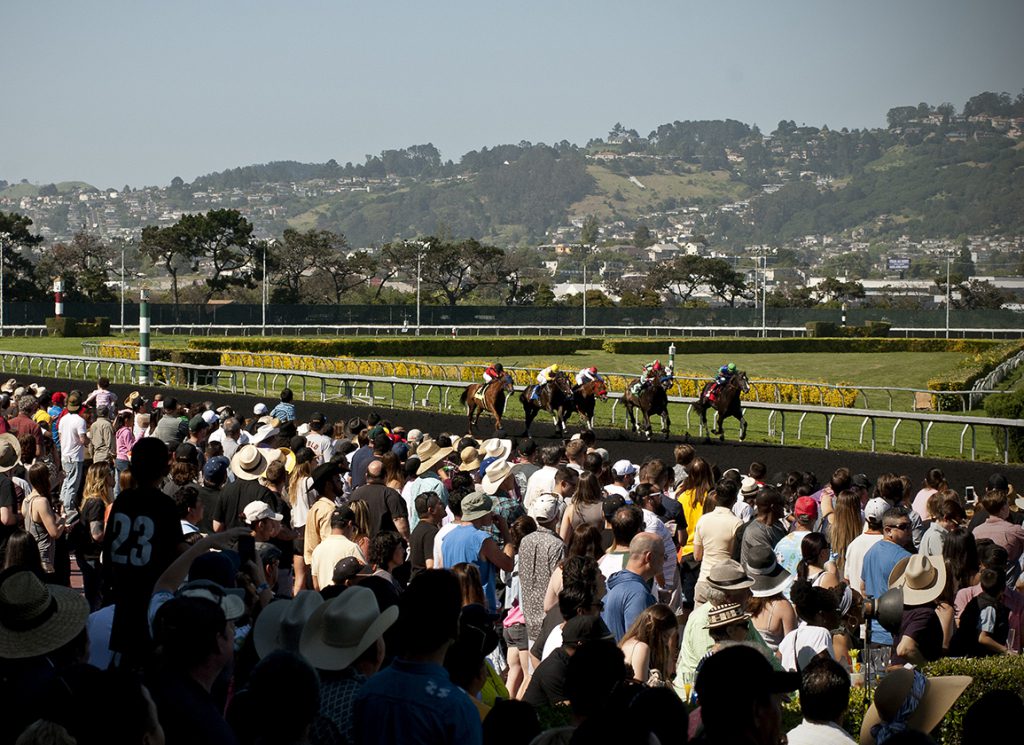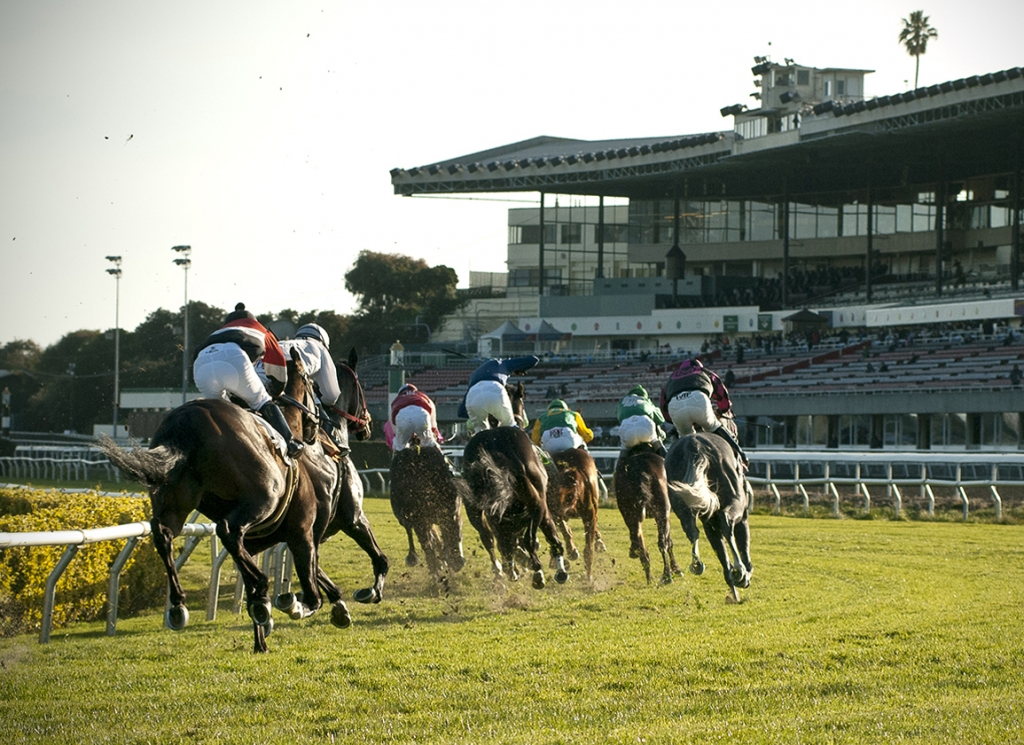Whether someone had the biggest stable in Northern California or a two-horse operation, the news released Sunday that Golden Gate Fields, which opened in 1941, will shut down at the end of the meet in December was a punch to the gut and led to a great deal of uncertainty. Horsemen have just five months to figure out what they will do next. The possibilities are many. They could shift their operations to Santa Anita. They could stay put and hope that the California Authority of Racing Fairs (CARF) circuit expands and offers enough racing opportunities to make it viable to remain in Northern California throughout the year. Or they could simply leave the sport.
The TDN checked in with six Northern California trainers, ones with both big and small stables, and asked how they plan to try to make the best out of a bad situation and whether or not they will relocate to Southern California.
Steve Sherman: I was surprised by the announcement like everyone else. I really didn't have a clue. They had just fixed the roof on my barn, so I really didn't think this sort of announcement would be coming out. I was shocked. You always heard rumors that the place could be gone in two, three years, but I certainly didn't think it would be closing in December. As for a plan, I'll be honest with you, I don't have one. I will see how things shake out. I don't want to make too quick of a decision. Is Santa Anita an option for me as we speak right now? No. I have no plans to go there. Things could change, but as of right now it's not my plan. I was going through my barn and I probably have 10 to 12 horses that could compete down there. It's just a different beast down there compared to the way it is here. The horses are much better and the races are a lot tougher. That's why you see a lot of horses come up north. It's because they can't handle it down there. Out of 1,000 horses here, maybe they'll get 200, 300. That might help short term, but if those horses don't do well there and don't pan out what does the long-term picture look like? And where are the other 600-700 horses going to go? I don't see what Santa Anita is envisioning. Maybe they were expecting to get half the horse population from here or maybe two-thirds of it. If so I could understand what they're trying to do. But when people start going through their barns and trying to figure out what horses can make it down there, there's probably not that many. The numbers don't add up.
Dan Markle: I had a pretty good routine. Raced up at Emerald in the summer and went down to Golden Gate in the winter. That worked out pretty good. But to lose Golden Gate is devastating. With them closing Golden Gate I'm going to have to think of something new. I don't have the caliber of horses that can compete at Santa Anita, so I won't be going there. And the purses at Santa Anita aren't that great either compared to some of the other big tracks. I guess I'm going to have to relocate. Maybe they can get something going with the Fairs. I think that's possible. If that happens it might work out better than what we had before. But I'm not in favor of moving my operation down there at all.
Marcia Stortz: I am hearing that CARF is going to try to work things out so that the meets go for 10 months between Sacramento and Pleasanton. I'd like that because it would be good to get back on the dirt. I have a couple of horses that would fit in Southern California but not really many more than that. It's a different league. We were told in December a year ago that The Stronach Group was going to replace the surface, which was, in my opinion, in dire need of repair. We were told the new surface would be put in by June when we left for the fairs. When it wasn't purchased in the winter, the writing was on the wall in my opinion.
I would never move to Santa Anita. First of all, I don't think I would get the stalls. I suppose I could try to get into Los Alamitos.
Brendan Galvin: It was a bit of a shock. We were kept in the dark, but we do know that the people at CARF are trying to organize something. It's unfortunate that they are closing Golden Gate. That place has been good to me. I've got to go some place or I've got to retire and I don't have the money to retire. I'll either go to Southern California or another state. I've got some nice allowance horses here, but they probably wouldn't be allowance horses down there and that's a problem. I also have some cheap horses who would have no business going down there. It's a real kick in the head. I'm hoping the fair tracks can get something together. If they don't expand I think that will be the end of the fair circuit because nobody is going to ship all the way back up here for a few months of fair racing. There are a lot of horses here who would be running over their heads at Santa Anita. These horses are here for a reason. Everyone wants to win at Santa Anita and Del Mar and if they could they would be there already and not racing in Northern California. These horses are here for a reason.
Tim Bellasis: Nobody knows what to do. We are all hoping that CARF steps up to the plate and it looks like they will and that would allow racing to continue in Northern California. They're saying they could race 10 months out of the year. They've worried for a good five years that Golden Gate was going to close so they have a plan that can be put into action fairly quickly. They'll get some of the better barns from here with the better horses. They may go down there. Out of my 10 horses I've got now, seven of them are Santa Anita rejects. I wouldn't be capable of making any money down there. When Golden Gate decided they weren't going to put down a new surface on the Tapeta track, which was way overdue, you could pretty much tell what was going to come next. Santa Anita will get some of our horses, but it will be a small percentage. I think only 10-20% of the horses we have in Northern California could win a race down there.
Reid France: For me, it wasn't a big surprise. That being said, it's a bummer. It's the track I attended as a kid, I won my first race there and had a lot of success there. It's very disappointing that it's going to be gone. As far as my plans go, nothing is set in stone. We still don't know what kind of dates will come out of this. I will keep my options open and look at places like Florida, Kentucky and New York. Once we know what our options are here and we can sort some things out, we'll try to figure out where we'd go. We'll consider sending some to Santa Anita because we have a lot of Cal-breds. We're not closing that door. But we will look at a lot of places, all the major racing jurisdictions and see where we're at. I probably have a handful that could fit at Santa Anita. I'm sending five to Del Mar and will see what happens with them. This will all work itself out.
The post Northern California Trainers React to Golden Gate Closure, Plot Their Next Moves appeared first on TDN | Thoroughbred Daily News | Horse Racing News, Results and Video | Thoroughbred Breeding and Auctions.



